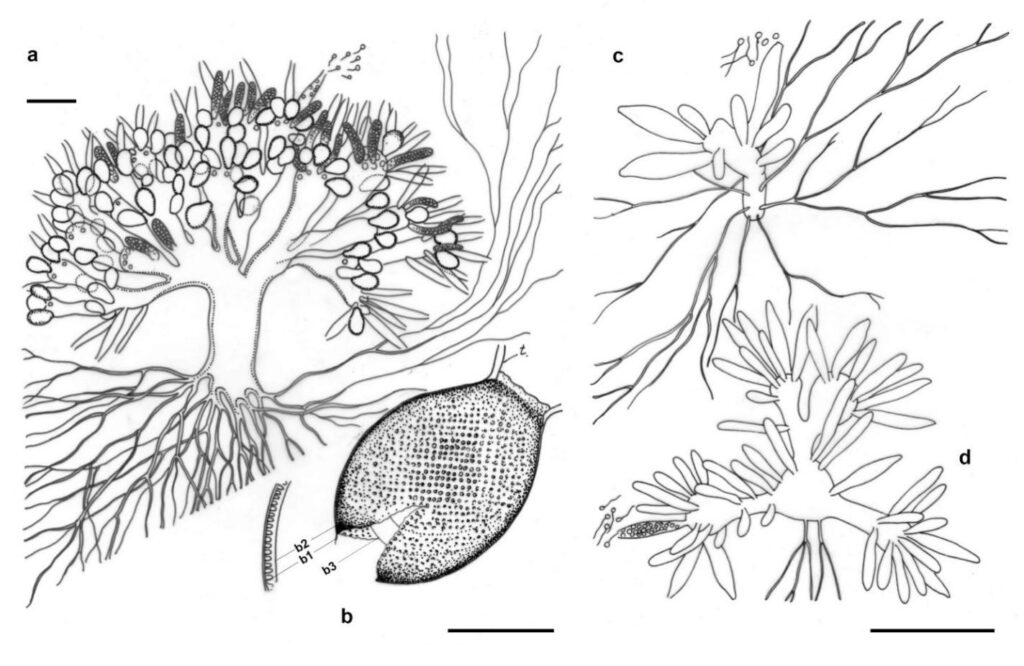Fungalpedia – Note 79 Blastocladiomyceta
Blastocladiomyceta Tedersoo, Sánchez-Ramírez, Kõljalg, Bahram, Döring, Schigel, T. May, M. Ryberg & Abarenkov
Citation when using this entry: Wijayawardene et al., in prep – Fungalpedia, taxa of the basal fungi and fungus-like organisms. Mycosphere.
Index Fungorum, Facesoffungi, MycoBank, GenBank, Fig 1.
The subkingdom Blastocladiomyceta covers a single phylum (Blastocladiomycota), introduced based on phylogenies and divergence time estimates (Tedersoo et al. 2018). It was found and reported as saprotrophs or parasites on plants, animals, and fungi. Morphological descriptions were given by James et al. (2006) and Tedersoo et al. (2018). The phylum Blastocladiomycota contains one subphylum (Blastocladiomycotina) and two classes (Blastocladiomycetes, Physodermatomycetes) (Tedersoo et al. 2018). Thirty-five species are named in Index Fungorum (2023).
Type genus: Blastocladia Reinsch.
Figure 1 – Blastocladia pringsheimii (redrawn from Blackwell 1940). a Blastocladia pringsheimii with far-reaching rhizoidal mycelium. b A dried resistant sporangium cracked open to show the three wall layers (b1, b2, b3). c, d Sporangia grown on sterile corn meal agar. c A two-day old thallus (seen from the side). d A seven-day old thallus (seen from above). e Basidiospores. Scale bars: a, c, d = 100 µm, b = 25 µm.
References
Blackwell E. 1940 – A life cycle of Blastocladia pringsheimii Reinsch. Transactions of the British Mycological Society 24, 68–86.
James TY, Letcher PM, Longcore JE, Mozley-Standridge SE et al. 2006 – A molecular phylogeny of the flagellated fungi (Chytridiomycota) and description of a new phylum (Blastocladiomycota). Mycologia 98, 860–871.
Entry by
Norphanphoun C, Center of Excellence in Fungal Research, Mae Fah Luang University, Chiang Rai 57100, Thailand and Mushroom Research Foundation, 128 M.3 Ban Pa Deng T. Pa Pae, A. Mae Taeng, Chiang Mai 50150, Thailand
(Edited by Kevin D. Hyde)
Published online 15 September 2023
